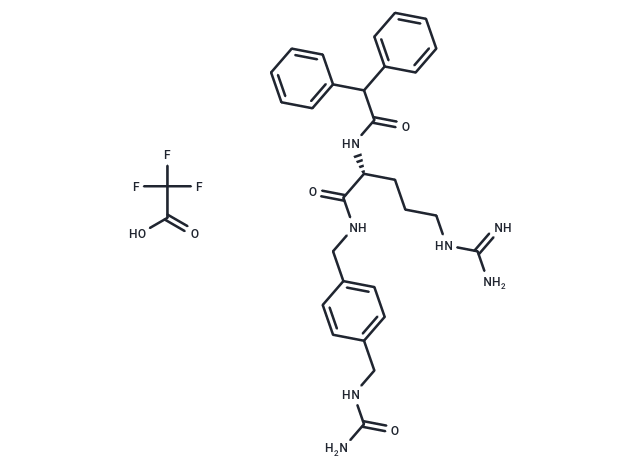Shopping Cart
- Remove All
 Your shopping cart is currently empty
Your shopping cart is currently empty

BIBO3304 (diTFA), a selective neuropeptide Y (NPY) Y1 receptor antagonist, demonstrates oral efficacy. It exhibits high affinity for Y1 receptors in both humans and rats, with IC50 values of 0.38 nM and 0.72 nM, respectively. Additionally, BIBO3304 (diTFA) enhances bone-tendon healing via the Wnt/β-catenin signaling pathway [1] [2] [3].

| Pack Size | Price | Availability | Quantity |
|---|---|---|---|
| 1 mg | $786 | 10-14 weeks |
| Description | BIBO3304 (diTFA), a selective neuropeptide Y (NPY) Y1 receptor antagonist, demonstrates oral efficacy. It exhibits high affinity for Y1 receptors in both humans and rats, with IC50 values of 0.38 nM and 0.72 nM, respectively. Additionally, BIBO3304 (diTFA) enhances bone-tendon healing via the Wnt/β-catenin signaling pathway [1] [2] [3]. |
| Molecular Weight | 757.68 |
| Formula | C33H37F6N7O7 |
| Cas No. | 2310085-85-7 |
| Storage | Powder: -20°C for 3 years | In solvent: -80°C for 1 year | Shipping with blue ice. |

Copyright © 2015-2025 TargetMol Chemicals Inc. All Rights Reserved.